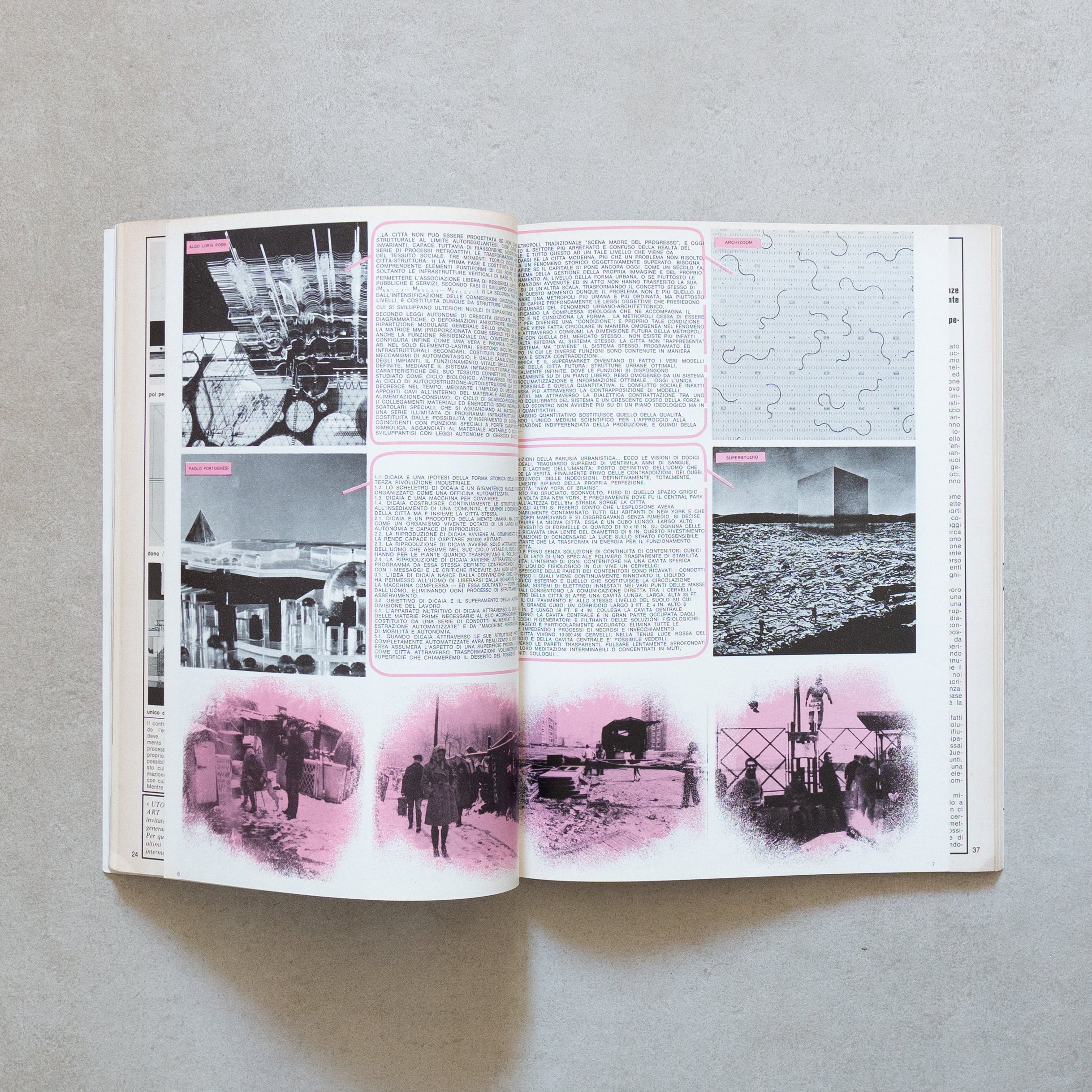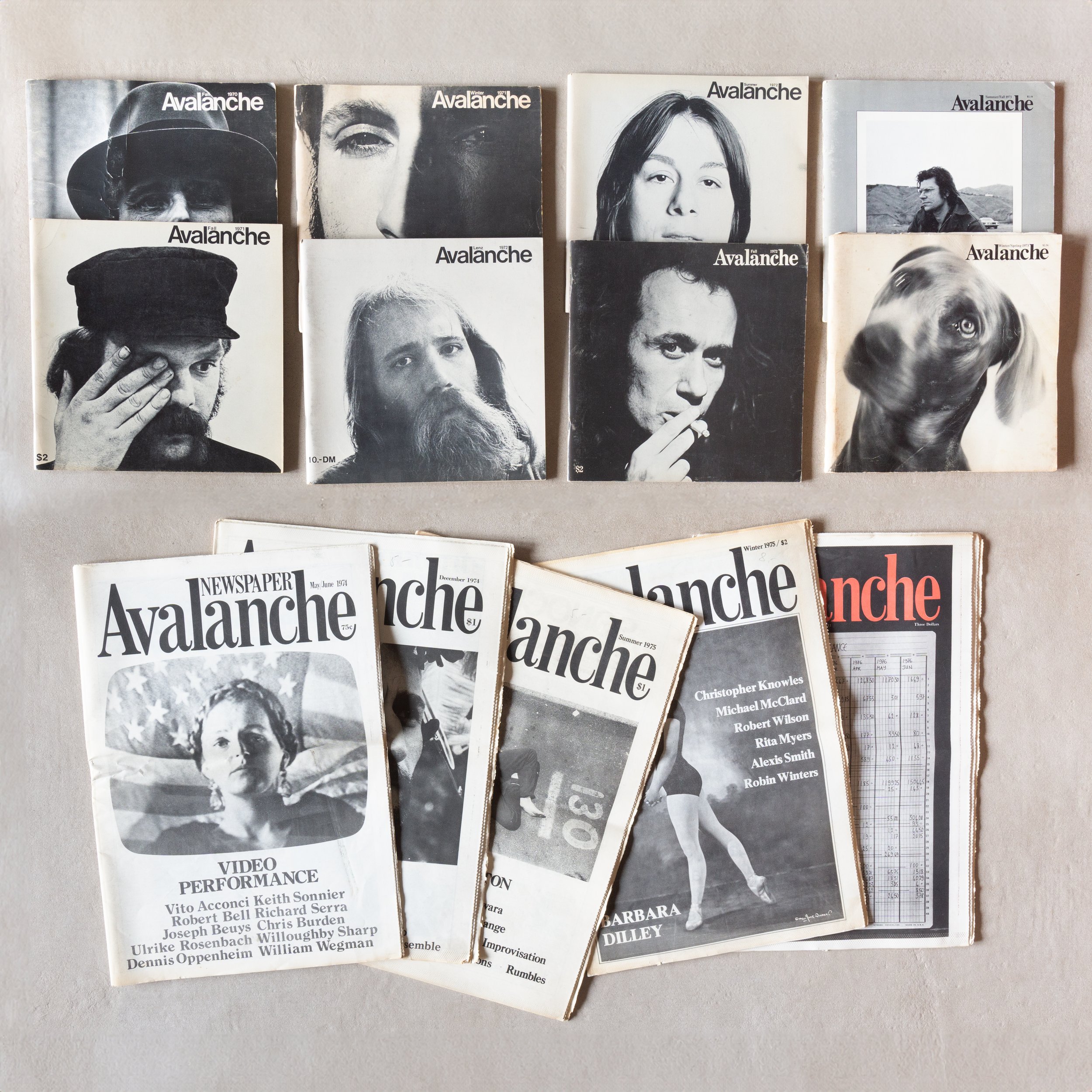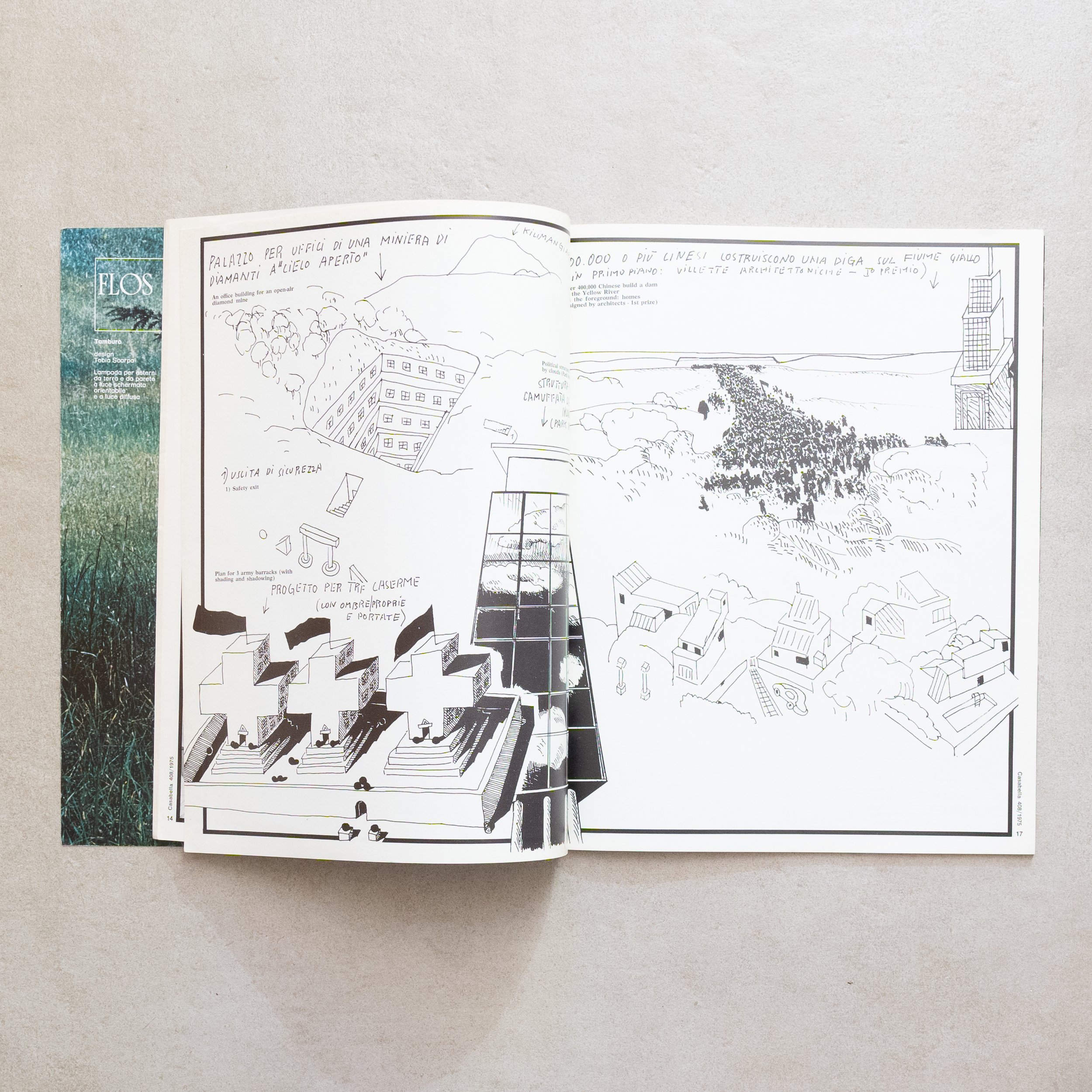 Image 1 of 7
Image 1 of 7

 Image 2 of 7
Image 2 of 7

 Image 3 of 7
Image 3 of 7

 Image 4 of 7
Image 4 of 7

 Image 5 of 7
Image 5 of 7

 Image 6 of 7
Image 6 of 7

 Image 7 of 7
Image 7 of 7

STRUM Gruppo / CASABELLA n. 368/369
STRUM Gruppo / Utopia. Fotoromanzo designer mito spazio utopista - La lotta per la casa. Fotoromanzo capitalista slum studenti Ges.Cal - La città intermedia. Fotoromanzo militante architetto operaio studente, in CASABELLA n. 368/369
Milano, 1972 (agosto/settembre), 31x24,5 cm., softcoevr, pp. [24]-116- [2], color illustrated cover by Max Peintner. Director: Alessandro Mendini. Issue entirely dedicated to radical architecture with all Italian texts translated into English, includes 3 situationist photo novels created by the Strum Group (G. Ceretti, P. De Rossi, C. Giammarco, R. Rosso, M. Vogliazzo), whose page numbering is included in the overall one of the magazine: 1) (Green cover) “Utopia. Fotoromanzo designer mito spazio utopista”, pp. 12 entirely illustrated with photographs by Paolo Mussat-Sartor, photomontages and photocompositions in black and white and toned in green and pink. This issue raises the political problem of architecture freed from the law of profit and alternative to the “global system of exploitation”; 2) (White cover) “La lotta per la casa. Fotoromanzo studentesco capitalista delle baraccopoli Ges.Cal”, pp. 12, entirely illustrated with photographs by Paolo Mussat-Sartor, photomontages and photocompositions in black and white and toned in green and pink. This booklet deals with the dramatic housing problem in Turin, caused by the productive expansion of Fiat and the consequent influx of immigrants from the South. 3) (Pink cover) “La città intermedia. Fotoromanzo militante architetto operaio studente”, pp. 12, entirely illustrated with photographs by Paolo Mussat-Sartor, photomontages and photocompositions in black and white and toned in green and pink. By “intermediate city” we mean the complex of anti-capitalist political behaviors that are rooted in the territory and build an alternative to the logic of production for profit. It is a continuous revolutionary process which takes place in daily life, demystifying every ideology and creating spaces for expression and affirmation of real needs. Articles by: A. Mendini, Gruppo Zziggurat, G. De Carlo, R. Dalisi, Superstudio.
[Bibliography: Navone - Orlandoni 1974: pp. 188-189; Pettena 1996: pag. 311].
STRUM Gruppo / Utopia. Fotoromanzo designer mito spazio utopista - La lotta per la casa. Fotoromanzo capitalista slum studenti Ges.Cal - La città intermedia. Fotoromanzo militante architetto operaio studente, in CASABELLA n. 368/369
Milano, 1972 (agosto/settembre), 31x24,5 cm., softcoevr, pp. [24]-116- [2], color illustrated cover by Max Peintner. Director: Alessandro Mendini. Issue entirely dedicated to radical architecture with all Italian texts translated into English, includes 3 situationist photo novels created by the Strum Group (G. Ceretti, P. De Rossi, C. Giammarco, R. Rosso, M. Vogliazzo), whose page numbering is included in the overall one of the magazine: 1) (Green cover) “Utopia. Fotoromanzo designer mito spazio utopista”, pp. 12 entirely illustrated with photographs by Paolo Mussat-Sartor, photomontages and photocompositions in black and white and toned in green and pink. This issue raises the political problem of architecture freed from the law of profit and alternative to the “global system of exploitation”; 2) (White cover) “La lotta per la casa. Fotoromanzo studentesco capitalista delle baraccopoli Ges.Cal”, pp. 12, entirely illustrated with photographs by Paolo Mussat-Sartor, photomontages and photocompositions in black and white and toned in green and pink. This booklet deals with the dramatic housing problem in Turin, caused by the productive expansion of Fiat and the consequent influx of immigrants from the South. 3) (Pink cover) “La città intermedia. Fotoromanzo militante architetto operaio studente”, pp. 12, entirely illustrated with photographs by Paolo Mussat-Sartor, photomontages and photocompositions in black and white and toned in green and pink. By “intermediate city” we mean the complex of anti-capitalist political behaviors that are rooted in the territory and build an alternative to the logic of production for profit. It is a continuous revolutionary process which takes place in daily life, demystifying every ideology and creating spaces for expression and affirmation of real needs. Articles by: A. Mendini, Gruppo Zziggurat, G. De Carlo, R. Dalisi, Superstudio.
[Bibliography: Navone - Orlandoni 1974: pp. 188-189; Pettena 1996: pag. 311].
STRUM Gruppo / Utopia. Fotoromanzo designer mito spazio utopista - La lotta per la casa. Fotoromanzo capitalista slum studenti Ges.Cal - La città intermedia. Fotoromanzo militante architetto operaio studente, in CASABELLA n. 368/369
Milano, 1972 (agosto/settembre), 31x24,5 cm., softcoevr, pp. [24]-116- [2], color illustrated cover by Max Peintner. Director: Alessandro Mendini. Issue entirely dedicated to radical architecture with all Italian texts translated into English, includes 3 situationist photo novels created by the Strum Group (G. Ceretti, P. De Rossi, C. Giammarco, R. Rosso, M. Vogliazzo), whose page numbering is included in the overall one of the magazine: 1) (Green cover) “Utopia. Fotoromanzo designer mito spazio utopista”, pp. 12 entirely illustrated with photographs by Paolo Mussat-Sartor, photomontages and photocompositions in black and white and toned in green and pink. This issue raises the political problem of architecture freed from the law of profit and alternative to the “global system of exploitation”; 2) (White cover) “La lotta per la casa. Fotoromanzo studentesco capitalista delle baraccopoli Ges.Cal”, pp. 12, entirely illustrated with photographs by Paolo Mussat-Sartor, photomontages and photocompositions in black and white and toned in green and pink. This booklet deals with the dramatic housing problem in Turin, caused by the productive expansion of Fiat and the consequent influx of immigrants from the South. 3) (Pink cover) “La città intermedia. Fotoromanzo militante architetto operaio studente”, pp. 12, entirely illustrated with photographs by Paolo Mussat-Sartor, photomontages and photocompositions in black and white and toned in green and pink. By “intermediate city” we mean the complex of anti-capitalist political behaviors that are rooted in the territory and build an alternative to the logic of production for profit. It is a continuous revolutionary process which takes place in daily life, demystifying every ideology and creating spaces for expression and affirmation of real needs. Articles by: A. Mendini, Gruppo Zziggurat, G. De Carlo, R. Dalisi, Superstudio.
[Bibliography: Navone - Orlandoni 1974: pp. 188-189; Pettena 1996: pag. 311].



















![Ettore Sottsass / Voglio risolvere per sempre il problema mondiale dell’architettura. [In Casabella n. 408]](https://images.squarespace-cdn.com/content/v1/60e820d70025154c9413112f/1715875372846-2CA21ZIVNPOCZG9SZFA3/sottsass-1975-casabella-n408-1.jpg)



